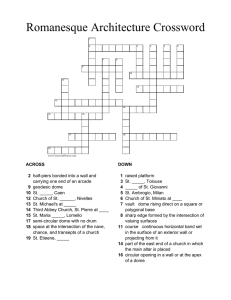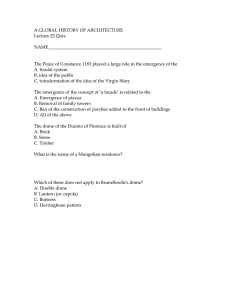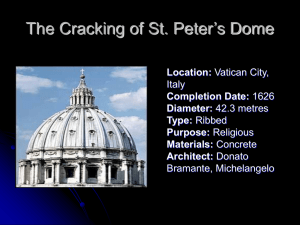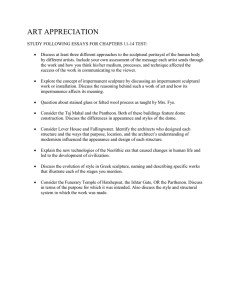basillica Group 21.ppt
advertisement
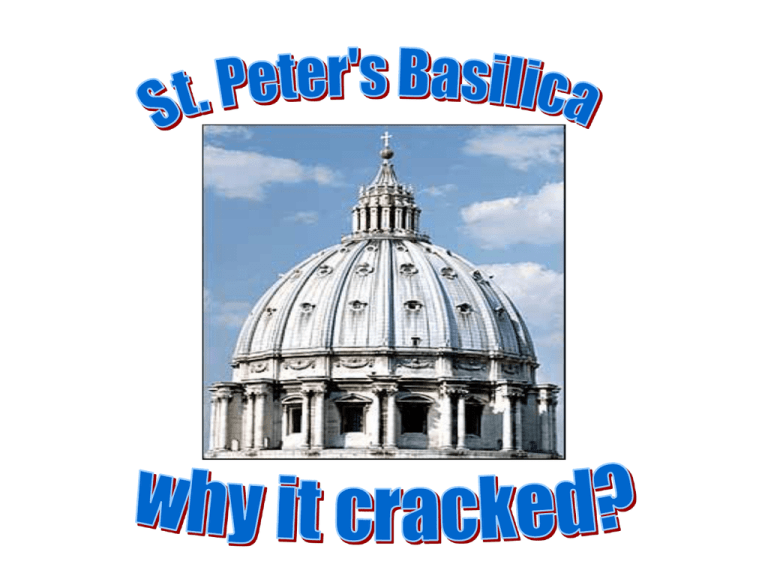
was completed in 1593 A little background • Who designed st. peters’ dome? • Michelangelo Buonarotti in 1557 • however.. • Michelangelo had passed away in 1564… • Before the dome was completed in 1593 First signs of trouble • early 18th century • gradual propagation of cracks up the side of the dome • in 1748 Polemi, an engineer, was brought in to analyse the dome and decide on what action should be taken Where Michelangelo Went wrong • Difficult task to achieve • No sophisticated methods of analysis • Engineers relied largely on Trial and error • Michelangelo’s design drew from the 46 meter span dome of the Florence cathedral, by Brunelleschi in 1420 • Michelangelo had 1:15 scale models built, one of clay and the other of wood Finished product • a double dome in brick, 42.3 metres in diameter • highest point is 120 metres above the floor • dome was parabolic • This exerted a smaller outward thrust Iron tension rings were built into the masonry to ensure no spreading at the base of the dome. However these precautions were insufficient • Polemi noticed that meridional cracks were appearing below 25 degrees on the dome • Indicative of minor failure due to inappropriate buttressing • The patterns created a series of masonry arches in a circular pattern all sharing the same central keystone Idea! • Polemi analysed the dome as a series of 50 masonry arches • He used Hooke’s principals to establish that the dome was still safe :1. He hung a chain down to form an inverted arch 2. This determined whether the hypothetical arches lay within the line of thrust 3. He computed the weight of the sliced arch 4. Each half arch was divided into 16 sections 5. Then loaded a flexible string with 32 unequal weights, each weight in proportion to the corresponding section of the arch As can be seen from the diagram below when it is inverted the shape of the chain does lie within the inner and outer surfaces of the arc Solution • To prevent any further propagation of the cracks he added a further four chains to the dome • These act like the hoops on a barrel preventing the structure from thrusting out any more Interesting fact! • increasing the thickness of the dome may actually diminish the structures efficiency • derived from statics, H = (1 – π/4)W =0.215W W is the weight of the segment being analysed H is the uniformly distributed horizontal outward force The greater the load the greater amount of support will be needed to prevent the outward thrust Bibliography • J.Heyman, The Stone Skeleton: Structural Engineering of Masonry Architecture • Howard Hibbard, Michelangelo • McPhee, Bernini and the Bell Tower • Giulio Carlo Argan, Bruno Contardi, Michelangelo Architect • Donna Walsh • Diarmuid Kehoe • Killian Courtney • Paul O’ Brien
